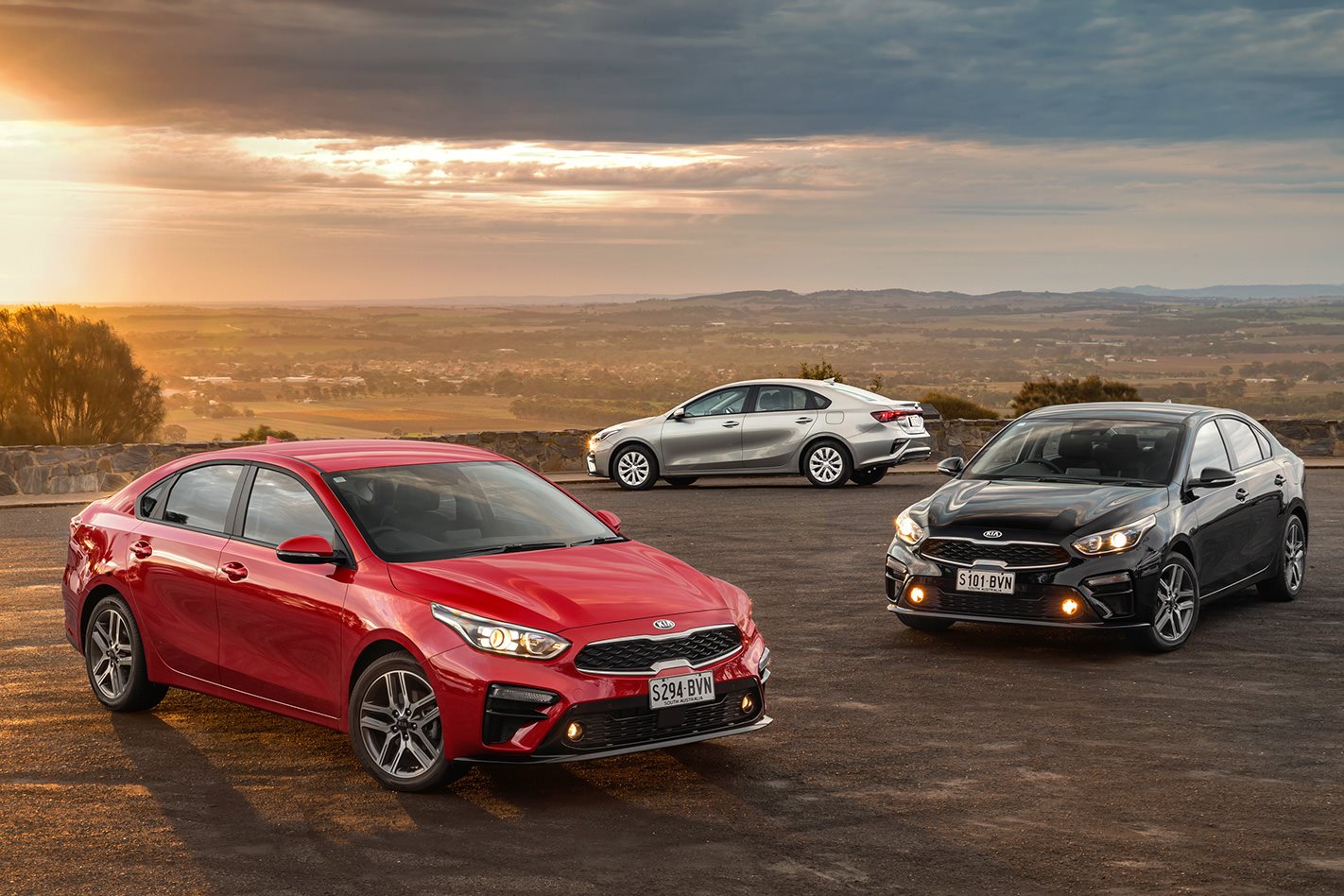
Kia Australia has rolled out its box-fresh third-generation Cerato sedan, with the four-door version of its volume-selling small car arriving on Aussie soil roughly half a year ahead of its hatchback stablemate.
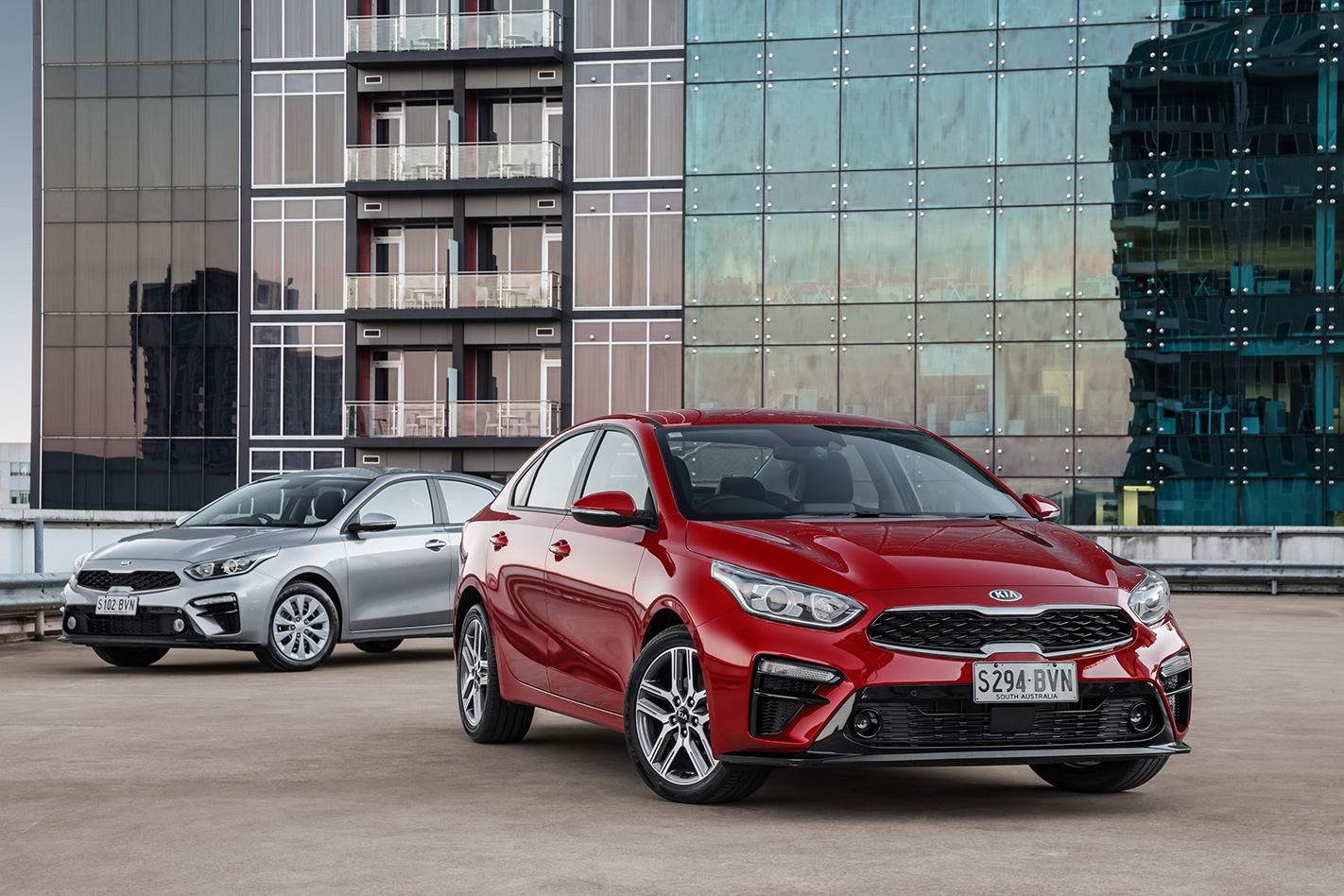
While the five-door Cerato will see out the rest of the year in second-generation form, the 2018 sedan brings forth a considerably modernised cabin, a fatter standard equipment list and more safety gear.

While the price of the base manual Cerato S sedan remains a sharp $19,990 drive-away, prices for other models in the range have fallen. The Cerato S automatic is now $21,490, a reduction of $800, the Cerato Sport auto falls $1100 to $23,690, and the top-grade Cerato Sport+ is trimmed to $26,190, a saving of $2800 over the now shelved Cerato Si. All of those prices are drive-away.
That’s despite critical equipment such as automatic emergency braking (AEB), rear parking sensors and a reversing camera being made standard range-wide. Other headline additions for all Cerato sedans include digital radio, lane-keep assist and a sizable 8.0-inch colour touchscreen display with built-in Android Auto and Apple CarPlay smartphone mirroring.
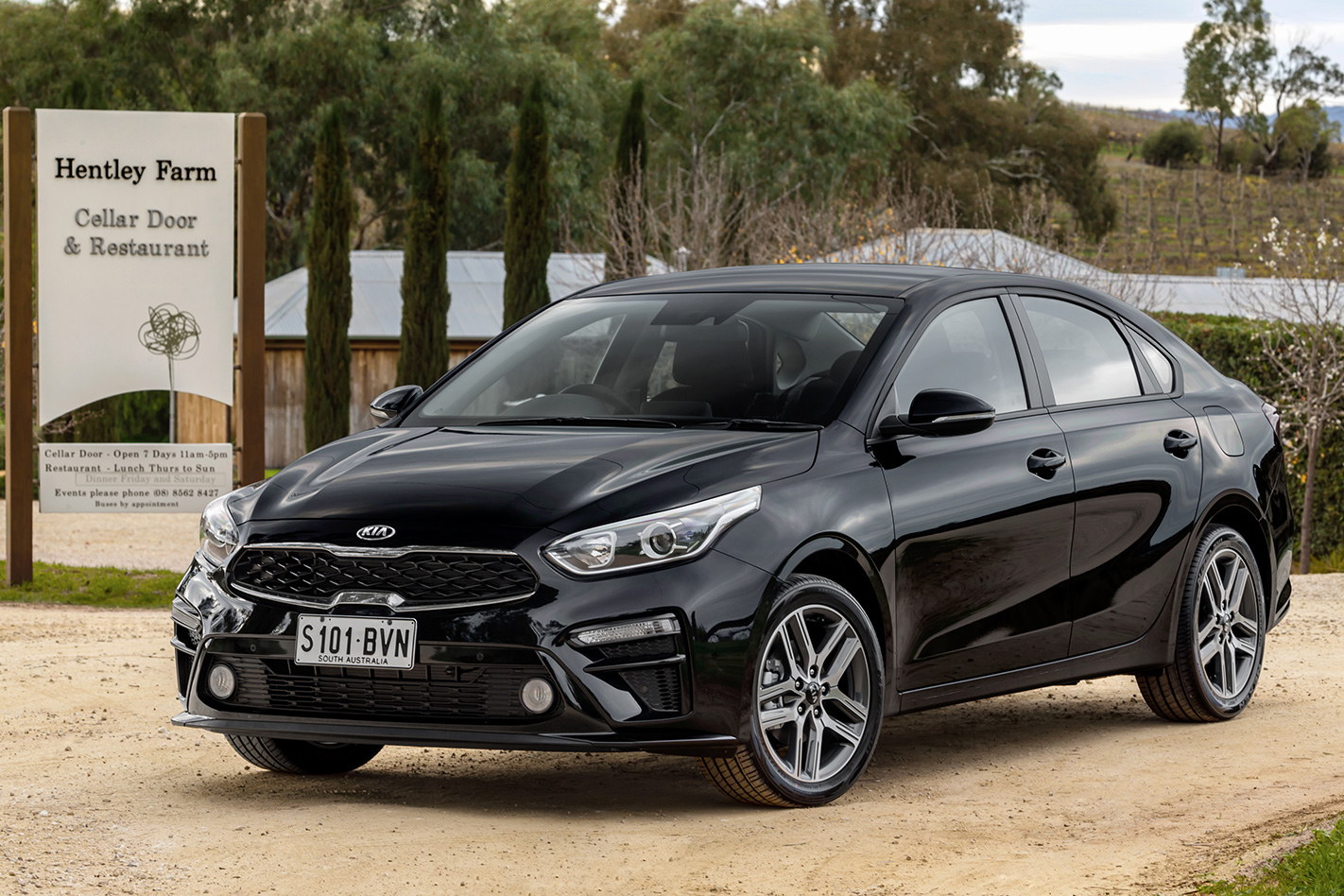
Step up into the mid-grade Cerato Sport and you gain sports cloth upholstery, integrated satellite navigation, 17-inch alloys (rather than the S’ 16-inch steel wheels), a leather-wrapped steering wheel and gear lever, standard-fit six-speed automatic, illuminated sunvisor mirrors and soft-touch door trims.
Bigger upgrades await if you opt for the flagship Cerato Sport+. That model has all of the above equipment, but augments it further with partial leather trim, active cruise control, dual-zone climate control, rear seat air vents, a seatback pocket on the passenger side, heated front seats, power folding wing mirrors, a self-dimming interior mirror, a sliding centre armrest, keyless ignition and LED daytime running lamps.
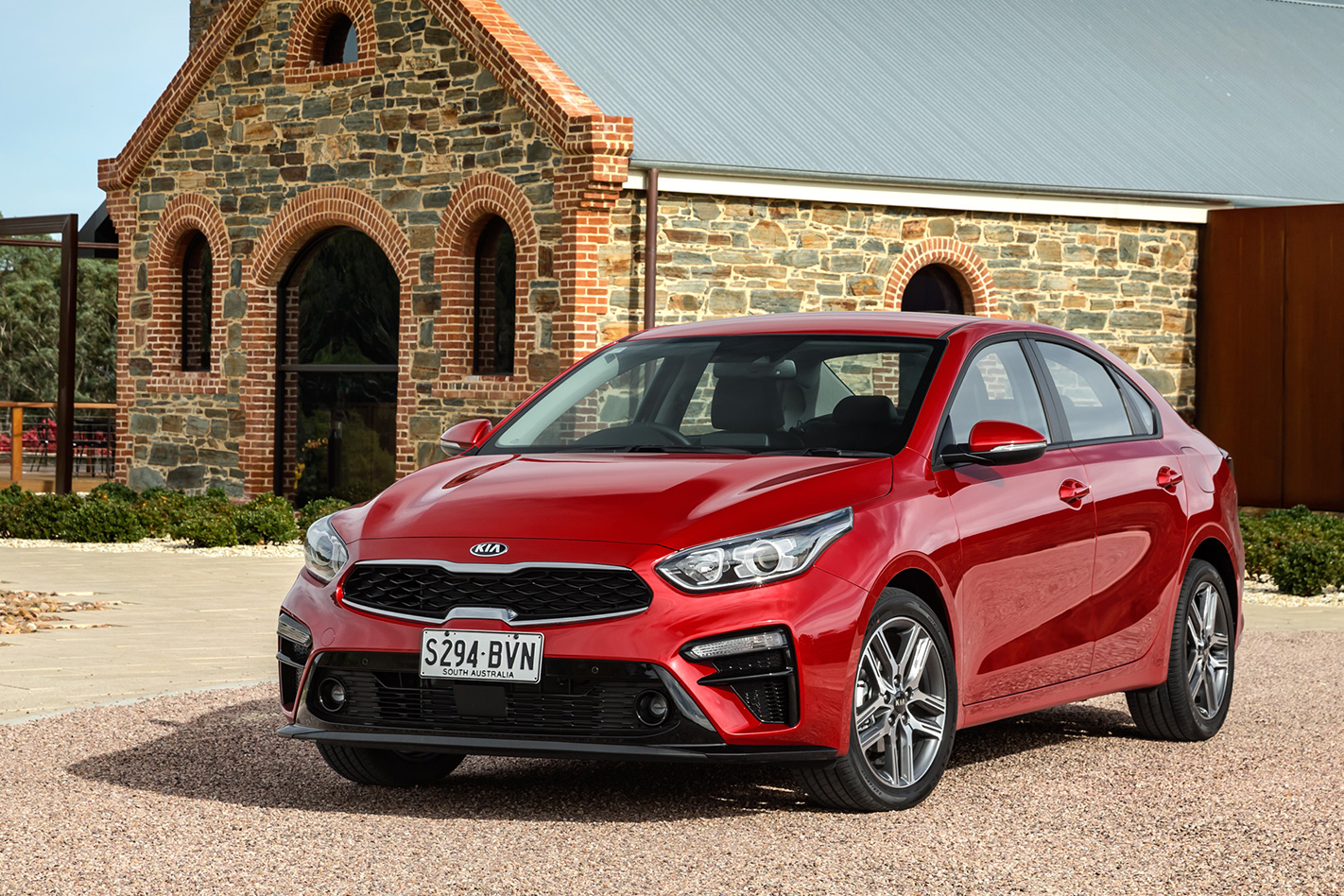
On top of that, the Sport+ is gifted a more high-featured AEB system that can detect pedestrians and cyclists, rather than the simpler system in the S and Sport that only reacts to other cars. It’s available as an option on lower grades for those who want the highest level of safety (as well as the active cruise control, blind spot monitoring and rear cross traffic alert that’s bundled with it), but it costs $1000 extra.
The Sport+ has the above features as standard, with the exception of blind spot monitoring and rear cross traffic alert. Those items are optional, and cost $500.
Styling both inside and out remains conservative, but it’s considerably more modern and mature than the blobby, organic form of its predecessor. From the front there’s an aggressively shaped bumper designed to echo that of the larger – and more performance-focused – Kia Stinger, while the rear is dominated by a rump-spanning tail-lamp graphic that links the lenses with a clear red bar to add some visual width.
Along the side the beltline now runs parallel to the ground rather than rising toward the rear, which benefits children in the back seat by bringing the window sills lower.
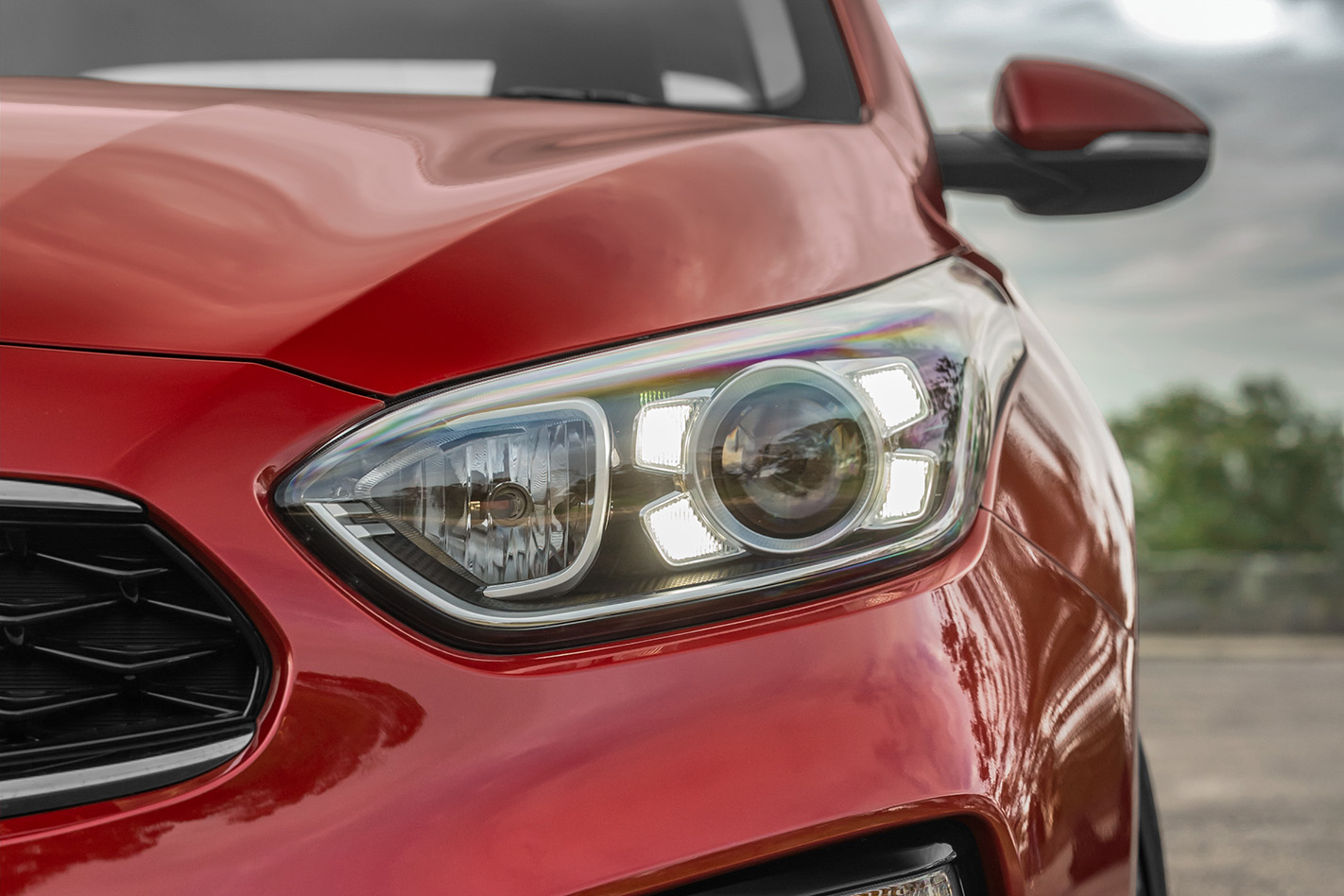
In terms of size the new Cerato sedan occupies a slightly larger footprint, with 80mm growth in overall length, 20mm wider hips and 5mm more height. The wheelbase remains 2700mm, but while passenger space stays roughly the same as a result (only growing 4mm in headroom and adding 3mm of legroom for front seat passengers and 10mm of rear-seat shoulder room), a longer rear overhang nets a more meaningful 20L increase to luggage capacity. With 502 litres of total seats-up boot space, the Cerato sedan has load-lugging capability that’s on par with cars from a size segment above.
The 2018 Cerato sedan’s suspension is tuned for local conditions by Kia Australia, and though the platform architecture is new (and now incorporates a higher percentage of high-strength steel), the suspension layout remains a basic MacPherson strut front, torsion beam rear arrangement.
There are fewer mechanical changes. All Cerato sedans are powered by a 112kW/192Nm 2.0-litre naturally aspirated and port-injected petrol inline four that carries over from the previous-generation model. Only the base Cerato S grade is available with a six-speed manual (and accounts for just five percent of overall Cerato sales), with the Sport and Sport+ grade being exclusively six-speed auto.
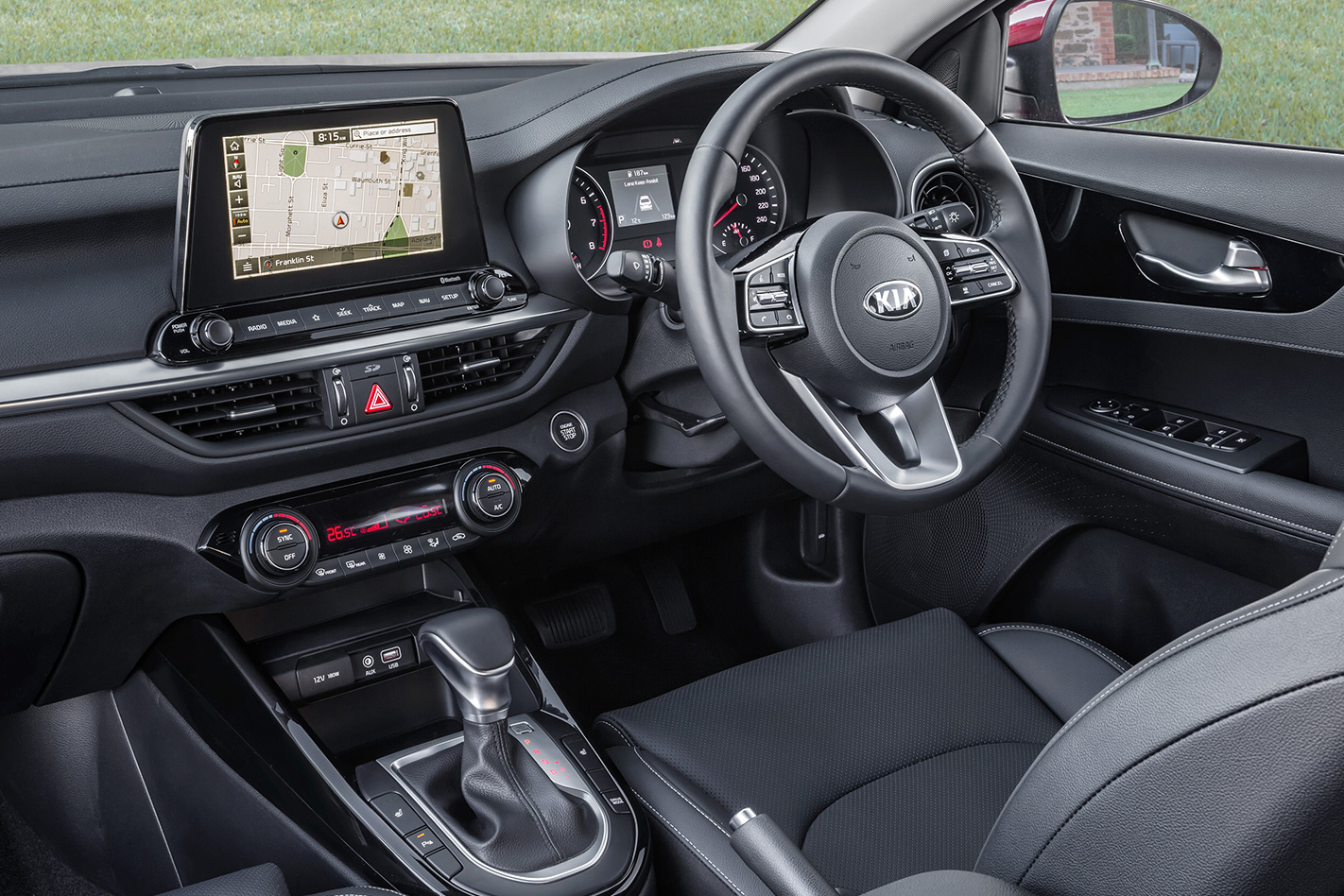
A slight weight increase coupled with the Cerato’s larger body dimensions and carry-over engine means fuel use worsens relative to its predecessor. The manual uses 0.3L/100km more than before while the auto receives a 0.2L/100km hit, taking the average fuel economy to 7.6L/100km and 7.4L/100km respectively.
2018 Kia Cerato sedan pricing
- Kia Cerato S sedan manual – $19,990
- Kia Cerato S sedan auto – $21,490
- Kia Cerato Sport sedan auto – $23,690
- Kia Cerato Sport+ sedan auto – $26,190
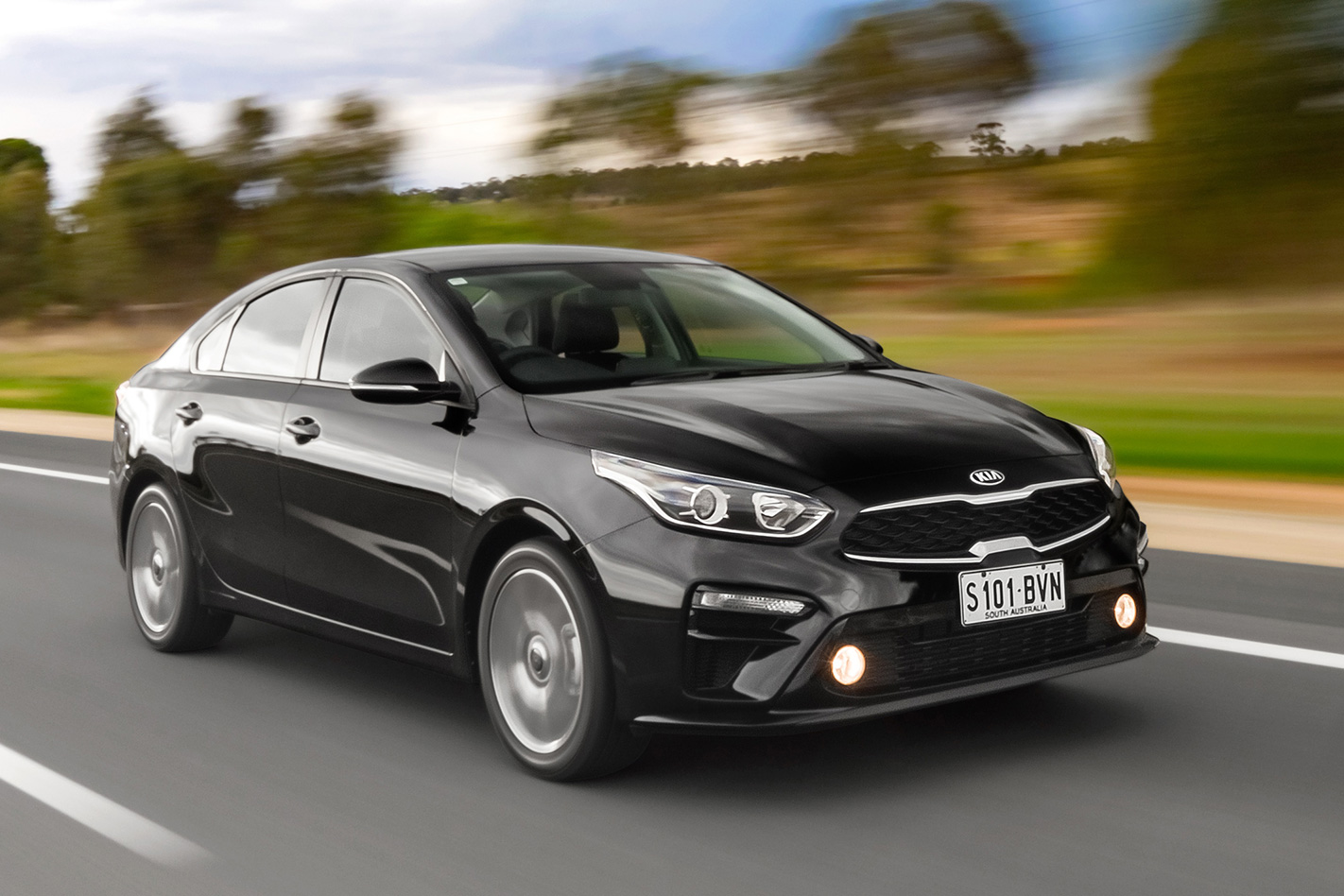
Options
- Safety pack 1 (for S and Sport) – $1000
- Safety pack 2 (for Sport+) – $500
- Premium paint – $520



